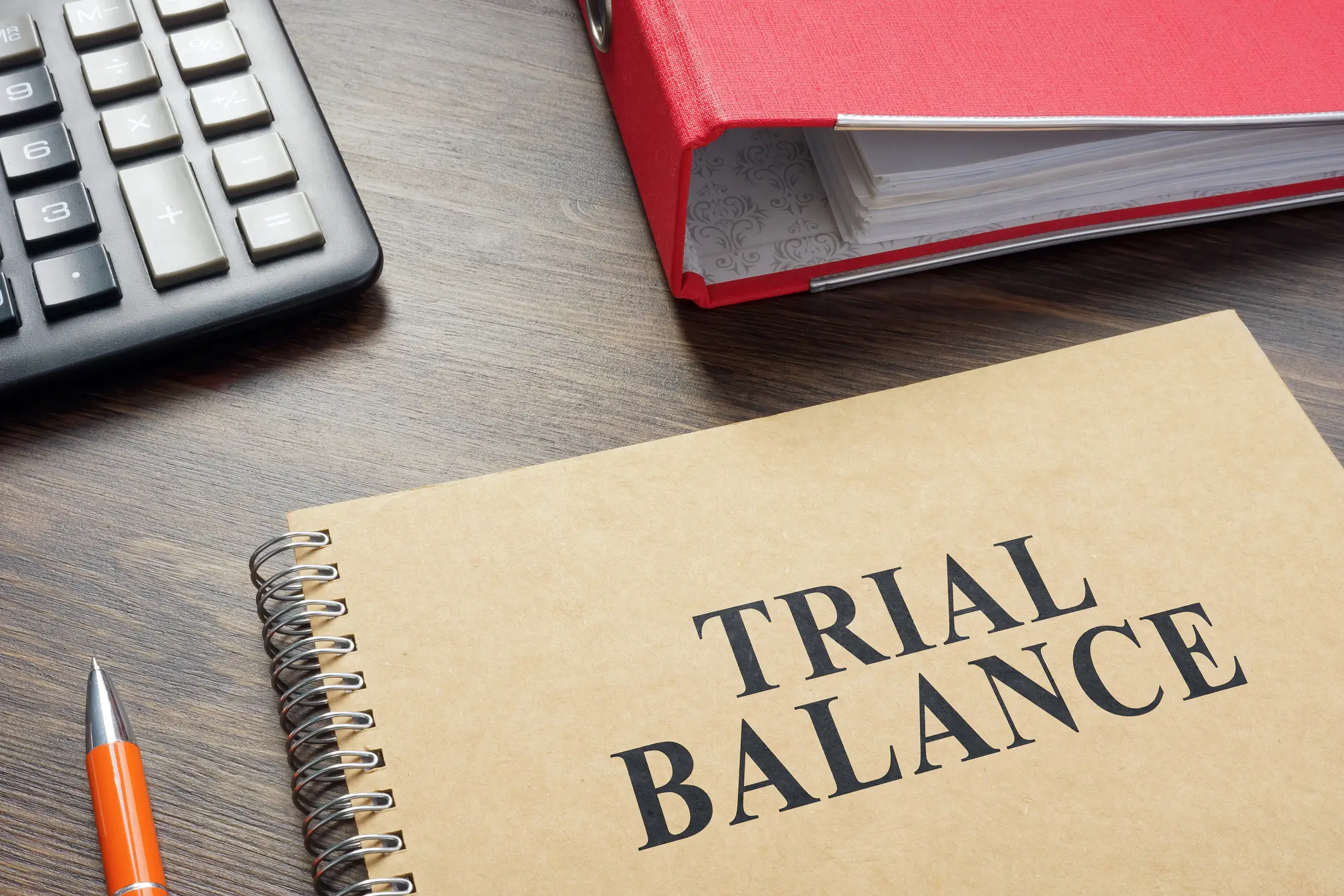What is a Trial Balance in Accounting?

Welcome to our blog post on trial balances in accounting! If you’re new to the world of finance and accounting, you may be wondering what a trial balance is and how it fits into the overall accounting process. In this post, we’ll provide a comprehensive overview of trial balances, including their purpose, how they are created, and how they can be used to identify errors in financial records. By the end of this post, you should have a solid understanding of trial balances and how they can help ensure the accuracy and completeness of your financial records. So let’s get started!
1. What Is a Trial Balance in Accounting?
A trial balance is a financial statement that lists the balances of all the accounts in a company’s chart of accounts. It is used to ensure that the total debits equal the total credits for a given accounting period. In other words, a trial balance is a way of verifying that the entries in a company’s general ledger are mathematically correct and balanced.
A trial balance is typically prepared at the end of an accounting period, such as the end of a month or year. It includes the balances of all the company’s assets, liabilities, and equity accounts, as well as the balances of all the company’s income and expense accounts.
To prepare a trial balance, a company’s accountant first lists all the account balances from the general ledger on a trial balance worksheet. The accountant then totals the debits and credits for each account and verifies that the total debits equal the total credits. If the debits and credits are not equal, it is likely that there is an error in the company’s financial records that needs to be corrected.
Once the trial balance is complete and the debits and credits are in balance, the accountant can use the information on the trial balance to prepare the company’s financial statements, such as the balance sheet and income statement.
In summary, a trial balance is a crucial step in the accounting process that helps ensure the accuracy and completeness of a company’s financial records. It is an important tool for detecting errors and ensuring that a company’s financial statements are reliable and accurate.
2. How to Prepare a Trial Balance
To prepare a trial balance, follow these steps:
- Gather all of the company’s financial records, including the general ledger and any supporting documents such as invoices, receipts, and bank statements.
- Review the general ledger to make sure all transactions have been recorded and posted to the appropriate accounts.
- Create a trial balance worksheet by listing all of the company’s accounts in the order they appear in the chart of accounts. For each account, list the account balance as either a debit or a credit, depending on the normal balance of the account.
- Total all the debits and credits for each column on the trial balance worksheet.
- Check that the total debits equal the total credits. If the debits and credits are not equal, there is likely an error in the company’s financial records that needs to be corrected.
- Make any necessary adjustments to the trial balance to correct any errors or omissions in the financial records.
- Prepare the company’s financial statements, such as the balance sheet and income statement, using the information on the adjusted trial balance.
It’s important to note that a trial balance is only as accurate as the information that is entered into the general ledger. Therefore, it is essential to ensure that all transactions are recorded accurately and completely in the general ledger before preparing the trial balance.

3. What Errors Can a Trial Balance Report?
A trial balance is an important tool for identifying errors in a company’s financial records. Some common errors that a trial balance can report include:
- Omitting a transaction from the general ledger: If a transaction is not recorded in the general ledger, it will not be included in the trial balance and the debits and credits will not be in balance.
- Recording a transaction in the wrong account: If a transaction is recorded in the wrong account, it will not be reflected in the correct account balance on the trial balance.
- Incorrectly recording the amount of a transaction: If the amount of a transaction is recorded incorrectly in the general ledger, it will affect the balance of the account and the debits and credits will not be in balance.
- Posting a transaction to the wrong side of an account: Each account has a normal balance, which is either a debit or a credit. If a transaction is posted to the wrong side of an account, it will affect the balance of the account and the debits and credits will not be in balance.
By reviewing the trial balance, a company’s accountant can identify these and other errors in the financial records and make any necessary corrections. This helps ensure that the company’s financial statements are accurate and reliable.
4. How to Reconcile the Trial Balance With the General Ledger
To reconcile the trial balance with the general ledger, follow these steps:
- Review the trial balance to identify any accounts that have an incorrect balance.
- Go to the general ledger and review the transactions for the account in question to identify any errors or omissions.
- Make any necessary adjustments to the general ledger to correct the errors or omissions.
- Re-prepare the trial balance to ensure that the debits and credits are in balance.
- Repeat the process until the trial balance is in balance and all errors have been corrected.
It is important to reconcile the trial balance with the general ledger regularly to ensure the accuracy and completeness of a company’s financial records. This helps ensure that the company’s financial statements are reliable and trustworthy.
| Account | Debit | Credit |
|---|---|---|
| 1140 📒 Accounts Receivable | 24,121.21 | - |
| 1130 📒 Cash on Hand | 3,298.70 | - |
| 1110 📒 Cash at Bank | 99.00 | - |
| 1210 📒 Furniture And Fittings | 351.84 | - |
| 2130 📒 GST Payable | - | 170.30 |
| 2150 📒 Dividends Payable | 0.44 | - |
| 2160 📒 Deferred Income | - | 0.44 |
| 2120 📒 Accounts Payable | 149.00 | - |
| 3110 📒 Owners Capital | - | 333.00 |
| 4110 📒 Sales | - | 25,262.06 |
| 4120 📒 Other Revenue | - | 2,924.00 |
| 4130 📒 Interest Income | - | 194.00 |
| 6110 📒 Rent | 545.96 | - |
| 5110 📒 Cost Of Goods Sold | 287.65 | - |
| 6150 📒 Utilities | 30.00 | - |
| TOTAL | 28,883.80 | 28,883.80 |
5. Using the Final Trial Balance for Reporting Errors
The final trial balance is the trial balance that has been reconciled and corrected to ensure that the debits and credits are in balance. It is used as the basis for preparing the company’s financial statements, such as the balance sheet and income statement.
If errors are discovered during the reconciliation process, they should be corrected in the general ledger and the trial balance should be re-prepared to ensure that the debits and credits are in balance. If errors are discovered after the financial statements have been prepared, they should be corrected in the financial statements and disclosed in the accompanying notes.
It is important to ensure that the final trial balance is accurate and complete, as it forms the basis for the company’s financial statements and is used to assess the financial health of the company. If the final trial balance is not accurate and complete, the financial statements will not be reliable and may not accurately reflect the company’s financial position.
FAQs
What is the purpose of a trial balance?
The purpose of a trial balance is to verify that the entries in a company’s general ledger are mathematically correct and balanced. It is used to ensure that the total debits equal the total credits for a given accounting period.
When is a trial balance prepared?
A trial balance is typically prepared at the end of an accounting period, such as the end of a month or year.
What information is included in a trial balance?
A trial balance includes the balances of all the company’s accounts, including assets, liabilities, equity, income, and expenses.
How do you prepare a trial balance?
To prepare a trial balance, gather all of the company’s financial records, including the general ledger and any supporting documents. Review the general ledger to ensure that all transactions have been recorded and posted to the appropriate accounts. Create a trial balance worksheet by listing all of the company’s accounts in the order they appear in the chart of accounts and totaling the debits and credits for each account. Check that the total debits equal the total credits. If the debits and credits are not equal, there is likely an error in the company’s financial records that needs to be corrected.
What errors can a trial balance report?
A trial balance can report errors such as omitting a transaction from the general ledger, recording a transaction in the wrong account, incorrectly recording the amount of a transaction, and posting a transaction to the wrong side of an account.
How do you reconcile the trial balance with the general ledger?
To reconcile the trial balance with the general ledger, review the trial balance to identify any accounts that have an incorrect balance. Go to the general ledger and review the transactions for the account in question to identify any errors or omissions. Make any necessary adjustments to the general ledger to correct the errors or omissions. Re-prepare the trial balance to ensure that the debits and credits are in balance. Repeat the process until the trial balance is in balance and all errors have been corrected.
Conclusion
In conclusion, a trial balance is a financial statement that lists the balances of all the accounts in a company’s chart of accounts. It is used to ensure that the total debits equal the total credits for a given accounting period, which helps to verify the accuracy and completeness of a company’s financial records. A trial balance is prepared at the end of an accounting period and includes the balances of all the company’s assets, liabilities, and equity accounts, as well as the balances of all the company’s income and expense accounts.
Preparing a trial balance involves reviewing the general ledger to ensure that all transactions have been recorded and posted to the appropriate accounts, creating a trial balance worksheet, and totaling the debits and credits for each account. If the debits and credits are not equal, there is likely an error in the company’s financial records that needs to be corrected.
A trial balance is an important tool for identifying errors in a company’s financial records and ensuring that the company’s financial statements are accurate and reliable. By reconciling the trial balance with the general ledger and correcting any errors, a company can ensure the integrity of its financial records and provide accurate and trustworthy financial information to stakeholders.
Gimbla Team | December 18th, 2022